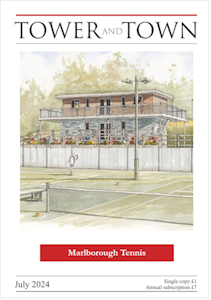

Tower and Town, July 2024 (view the full edition) (view the full edition)Summer SolticeAs you read this, we will have had the summer solstice and the days are getting shorter. So what is summer solstice and how does it affect our gardens? The word 'solstice' (first known usage in the 14th century) derives from the Latin sol (sun) and stes (standing). The summer solstice occurs when the sun is directly over the Tropic of Cancer. For every place north of the Tropic of Cancer, the sun is at its highest point in the sky and this is the longest day of the year. The winter solstice marks the shortest day and longest night of the year. In the Northern Hemisphere, it occurs when the sun is directly over the Tropic of Capricorn. Some plants respond to long nights, some to short nights, and some are indifferent. Photoperiodism is the process by which plants use the length of light and darkness to regulate flowering regardless of the ambient temperature or weather. A plant that requires a long period of darkness is termed a 'short-day' plant which forms flowers only when day length is less than about 12 hours. Many spring- and autumn-flowering plants are short-day plants, including chrysanthemums, poinsettias and Christmas cactus. If these are exposed to more than 12 hours of light per day, bloom formation does not occur. Other plants require only a short night to flower. These are termed 'long-day' plants which bloom only when they receive more than 12 hours of light. Many of our summer-blooming flowers and garden vegetables are long-day plants, such as asters, California poppies, snap dragons, lettuce, spinach, peas and potatoes. And some plants form flowers regardless of day length. Botanists call these 'day-neutral' plants: tomatoes, corn, cucumbers and roses for example. Some plants, such as petunias, defy categorization. They flower regardless of day length, but flower earlier and more profusely with long days. Indoor lighting can manipulate the day and night length to get plants to bloom at times other than they would naturally. For example, chrysanthemums naturally set flower with the long nights of spring or autumn. But by making the days shorter by covering them for at least 12 hours a day for several weeks over the late spring and early summer, you can simulate the light and darkness pattern of spring or autumn, thereby stimulating summer blooming. Or you can bring a long-day plant into bud formation and eventual bloom early by putting the plant under grow lights for a few hours a day beyond natural day length for a few weeks. So it may be too late to get your long-day plants to bloom early, but at least you know why they behave the way they do. Deidre Watson |